2-1 Chapter 2: Fractions and Problem Solving
Solution Manual for Mathematics for Elementary
Teachers 5th Edition Beckmann 0134392795
9780134392790
Full link download
Test Bank:
https://testbankpack.com/p/test-bank-for-mathematics-for-elementary-teachers-5thedition-beckmann-0134392795-9780134392790/
Solution Manual: https://testbankpack.com/p/solution-manual-for-mathematics-for-elementaryteachers-5th-edition-beckmann-0134392795-9780134392790/
Chapter 2
Fractions and Problem Solving
2.2 Defining and Reasoning About Fractions
1. Answers will vary. Michael needs to learn that the whole or unit amount can be comprised of a collection of objects. The collection of dark marbles is indeed less than the entire collection of marbles, and in that sense they can represent a number that is less than 1. As Michael is able to recognize that since there are three rows, we can group them together and call each row 1 of the total number of marbles.
2. The 3 means that the whole or the unit amount has been partitioned into three parts that are equal in some way. By itself, 2 is implied to mean 2 of a unit or 1. Saying 3 is the whole can be misleading because one may assume then that you are taking 2 of 3. This could be especially confusing in situations where the whole is defined instead of the implied unit. For example, if we were taking 2 of 8 pounds of apples, saying “3 is the whole” confuses the situation greatly.
3. This problem is similar to Practice Exercise 1. The given array of x’s represents four parts, each part a column of x’s. Since each part is 1 of the original rectangle, then we
Copyright © 2018 Pearson Education, Inc. © 2018 Pearson Education, Inc.
want to show five parts or columns, so we add 1 more column of 5 x’s as shown below.
4. This problem is very similar to Practice Exercise 2. The given array of x’s represents six parts, each part being a row of x’s. Since each part or row is 1 of the original rectangle, then we want to only show five parts or rows, so we remove 1 row of 5 x’s, as shown.
5. a. Cameron got 1 of the candy bar. See Figure 2.1. Arianna got 1 of the candy bar. Arianna then partitioned that portion into three equal pieces. So Cameron got 1 of one half of the candy bar. Partitioning the other half of the candy bar into three equal pieces shows that each piece is 1 of the candy bar.
Copyright © 2018 Pearson Education, Inc. © 2018 Pearson Education, Inc.
b. The entire candy bar is one of the unit amounts (as in Arianna got 1 of the candy bar). Another unit amount is just 1 of the candy bar, because Cameron got 1 of 2 3 one half of the candy bar. Depending on which unit amount you use, Cameron’s piece could be viewed as 1 or 1 .
6. a. 1 of a recipe. See Figure 2.2. Partitioning a cup into 3 parts, we see that two of these parts represents the amount (or portion) needed for a full recipe. Then we look at 1 of a cup of cocoa (or the amount we actually have on hand) and compare this to amount needed to make a full recipe. We see that 1 of the amount needed to make a full recipe is the amount we actually have on hand. So we can only make 1 of the recipe.
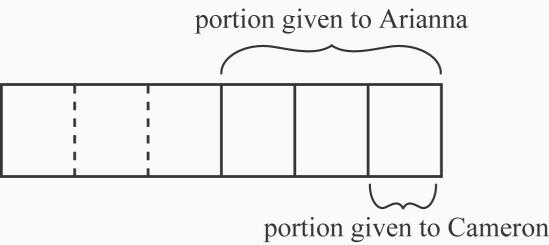
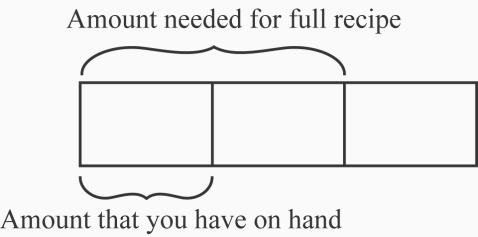
b. An entire cup of cocoa is one unit amount (as in you need 2 of a cup of cocoa for one batch). The amount needed for the full recipe (or 2 of a cup of cocoa ) is another unit amount. The amount that you have on hand is 1 of the amount needed for the full recipe and also it is 1 of a cup of cocoa.
7. a. 3 of the butter she should have used. See Figure 2.3. The recipe calls for 5 of a
cup, and Susan uses 3 of a cup. As the math drawing shows, Susan used three parts out of the five called for by the recipe. So she used 3 of the amount called
Copyright © 2018 Pearson Education, Inc. © 2018 Pearson Education, Inc.
2-4 Chapter 2: Fractions and Problem Solving
for by the recipe.
Copyright © 2018 Pearson Education, Inc. © 2018 Pearson Education, Inc.
Figure 2.3: Fractions of a cup of butter
b. A cup of butter is one unit amount ( 5 of a cup ). The amount of butter called for by the recipe is another unit amount ( 3 of the amount called for by the recipe). The amount that Susan used could be thought of as 3 of the amount called for by the recipe or as 3 of a cup of butter.

8. a. 4 of the daily value. See Figure 2.4. The full daily value of calcium is contained in 3 of a cup of snack food. So
of a cup of snack food contains 1 of the daily value. One cup of snack food is 4 of a cup of snack food, which gives 4 of the full daily value.
b. A cup of snack food is one unit amount ( 3 of a cup). The full daily value of calcium is another unit amount ( 1 of the daily value.). The amount of daily value of calcium in a cup could be thought of as
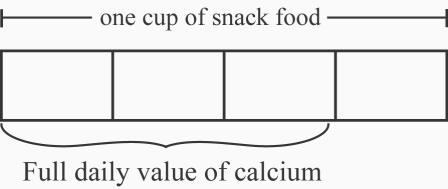
of the full daily value or as
of a cup of snack food
9. Answers will vary widely. For example:
of the sixth-grade class was on a field trip to
Copyright © 2018 Pearson Education, Inc. © 2018 Pearson Education, Inc.
the county courtroom. The students were divided into two equal groups for separate tours. What fraction of the class was in each group? ( 1 ) What fraction of the students on the trip was in each group? ( 1 )
10. a. Ben has the correct answer, but incorrect reasoning. If Marla ate 1 of each cake, then she ate 1 of the cakes combined (see part c). While it is true that 1 2 , the denominator in the phrase “ 2 of the cake”, does not represent the 24 pieces in the math drawing but rather 2 of the amount of cake . If the cakes were of the same size, then there would be 24 equal-sized pieces of cake and Ben’s reasoning would be correct.
Copyright © 2018 Pearson Education, Inc. © 2018 Pearson Education, Inc.
b. Seyong seems to believe that the equation 1 1 2 applies in this situation. But each twelfth is part of a different whole or unit amount, so this is not a meaningful computation. However, if the pieces were of cakes of the same size, say one pound, then Seyong would be right in a sense because the fractions would be parts of the same size whole. Seyong could say that Marla ate 2 of a pound of cake. However, Seyong is not correct to say that Marla ate 2 of the cake in either case. Unless the total amount of cake was split up into 12 pieces, then the piece sizes are not one-twelth of the cake. If the cakes were exactly the same sizes then the piece sizes would be 1 of the cake since there are 24 equal pieces that make up the entire amount of cake.
c. The cakes can be shared equally among 12 people by giving each person a serving like Marla’s. Since there are 12 servings for the total, each serving is 1 of the cake. See Practice Exercise 5.
11. Yes, Harry’s method is valid. See the solution to Practice Exercise 6.
12. See Figure 2.5. As in Practice Exercise 5, if you shade 3 of each individual pie, then the shaded parts make 3 of the 3 pies combined. Imagine preparing to serve 8 people each getting one piece from each pie. Person 1 gets all the pieces marked with 1, Person 2 gets all the pieces marked with 2, etc. All together, each person’s serving size is 1 of the 3 pies combined. If you have only served the shaded portions (or persons 1,2 and 3), then you have only served 3 of the 3 pies combined.
Copyright © 2018 Pearson Education, Inc. © 2018 Pearson Education, Inc.
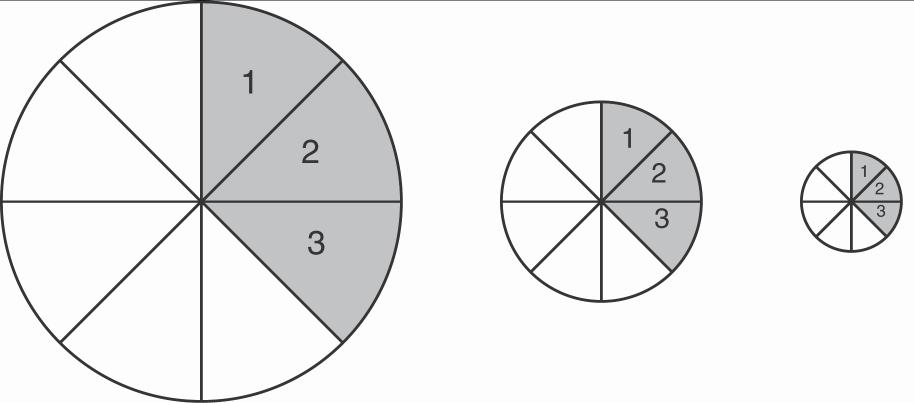
2-8 Chapter 2: Fractions and Problem Solving
13. We need at least three objects to show 7 , but that can get confusing because the unit amount could be viewed as one object, the entire collection of objects, or individual pieces of an object. A number line can be a useful way to show improper fractions.
14. In Figure 2.6, the 1-unit has been partitioned into 3 equal-length parts, so the distance between tick marks is 1 of the unit. Then 1 is the first tick mark to the right of zero and 3 3
2 3 is the second tick mark to the right of zero.
Copyright © 2018 Pearson Education, Inc. © 2018 Pearson Education, Inc.
17. The shaded region could be described as 7 of the total region or as 1 3 rectangles. An
unambiguous question would be: If the two rectangles combined is considered to be the unit amount, what fraction names the shaded region? This question is unambiguous because it clearly states what the unit amount will be.


18. 9 9 is correct if the entire figure (three rectangles) is meant to represent the unit amount.
4 is correct if one rectangle (partitioned into four pieces) is meant to represent the unit amount.
An unambiguous question might be: If the three rectangles together make the unit amount, what fraction of this unit amount is shaded? Any unambiguous question about the shaded region must clearly state what the unit amount is.
19. a. No! The hexagons take up
of the area. We do not know how many shapes were in NanHe’s design, but based on the fractions in the problem, we can know that the design was made using 11 shapes or a number of shapes that is a multiple
Copyright © 2018 Pearson Education, Inc. © 2018 Pearson Education, Inc.
of eleven. Thus, the shapes in each design can be organized into one or more groups of the same eleven shapes: 4 hexagons, 5 rhombi, and 2 triangles. In each group of 11 shapes, if you were to use triangles to make the hexagons, you would need 24 triangles. To do the same with the rhombi would require 10 triangles. So each group in the design could be recreated using 36 triangles, which has the effect of breaking any of these groups of 11 shapes up into equal parts. Thus, in each group of 11 shapes, the hexagons use 24 of the triangles and 24 2 . If the
Copyright © 2018 Pearson Education, Inc. © 2018 Pearson Education, Inc.
20.
area taken up by the hexagons is 2 of each group of 11 shapes, then 2 is also the 3 3 fraction of the entire design taken up by hexagons.
b. If we view the hexagons, triangles, and rhombi as all just shapes, then they are equal and this allows us to view each as 1 of the total number of shapes in each group and overall. But if we are talking about area, then the hexagon no longer equal to a triangle. Instead we see that the hexagon is the same as 6 triangles and we think of each shape in terms of how many triangles make up the shape, giving us equal parts again.
a. If School A has 600 students, then 800 8 of the students attend the after school program. If School A has 900 students, then 700 7 of the students attend the after school program. In the first situation, 1 of 600 students is 200 students, and
3 of 900 students is 600 students. So 800 out of the 1500 students are in the after school program.
b. Answers will vary. For example: if School A has 300 students and School B has 1200 students, then the fraction of students in the after school program is 100 800 900 3 . 1500 1500 5 Or:
If the each school has 750 students, then the fraction of students in the after school program is 250 500 750 1 . 1500 1500 2
c. Jamie is correct only when the same number of students attend each school. Jamie is wrong for any other situation because the unit amounts will be different.
2.3 Reasoning About Equivalent Fractions
1. This problem is very similar to Practice Exercise 1. If you have a rod that is partitioned into four equal parts and 3 are shown shaded, and then you partition each of the 4 parts into 3 smaller parts, the shaded portion will then consist of 33parts and the unit amount will consist of 43 parts. So the shaded portion of the unit amount can be described both as 3 of the rod and as 33 9 of the rod. See Figure 2.9.
Copyright © 2018 Pearson Education, Inc. © 2018 Pearson Education, Inc.

2. If you have a unit amount that is partitioned into three parts and two are shaded, and then you partition each of the three parts into four smaller parts, the shaded amount will then consist of 2 4 parts and the unit amount will consist of 3 4 parts. So the shaded portion of the unit amount can be described both as

of the unit amount and as
3. To give two fractions common denominators, we use a common multiple of the two numbers. For each fraction, we multiply both the numerator and denominator by a factor that will change the denominator to this common multiple. For the fractions given, this common multiple would be 12. Specifically, we multiply as shown below.
In giving the fractions common denominators, we are partitioning the parts of each fraction into equivalent sized smaller parts. The total number of pieces and the size of the pieces change, while the amount of the unit amount that would be represented by the shaded pieces remains the same.
4. See Figure 2.10. We join together small pieces of the rod to make larger rod pieces. Here we joining 2 smaller pieces to make a larger piece because both 6 and 8 can by divided by 2 (thus 8 pieces or 6 pieces could both be put into groups of 2). When we group the 6 shaded smaller pieces into groups of 2, this yields a total of 6 2 larger shaded rod pieces. Similarly, when we group the 8 total smaller pieces into groups of 2, this yields a total of8 2rod pieces . Put in math drawing that looks something like this
Division is typically thought of as getting smaller. Here the pieces are getting larger. But the number of pieces is getting smaller since you had 8 total pieces (and 6 shaded) and now via division you have 4 total rod pieces with 3 shaded rod pieces. We are seeing 3 groups of 2 shaded (6) out of 4 groups of 2 in the unit amount. Arithmetically, we have
Copyright © 2018 Pearson Education, Inc. © 2018 Pearson Education, Inc.
5. To simplify a fraction you look for common factors of the numerator and denominator. This makes sense because we are trying to regroup the smaller pieces of the fraction into larger pieces so that the unit amount is partitioned into fewer parts. Specifically, the six shaded pieces representing the numerator in 6 could be grouped into two pieces, with

three smaller pieces in each group. Likewise, the nine pieces representing the denominator can be grouped into three pieces, again with three smaller pieces in each group. See Figure 2.11.
We then end up with two shaded pieces out of three pieces overall, that is, 2 . Arithmetically, we have
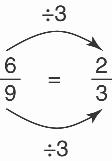
The total number of pieces and the size of the pieces change, while the amount of the unit amount that would be represented by the shade pieces remains the same.
6. See Figure 2.12. Since
and
, let each tick mark represent
of the unit amount.
7. See Figure 2.13. Since
, let each tick mark represent 1 of the
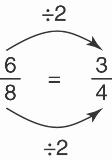
Chapter 2: Fractions and Problem
8. See Figure
Note that 0.3
and that
Since
10. See Figure 2.16. To have sevenths and thirds both falling on tick marks, we must partition the number line into twenty-firsts. I accomplished this by first dividing the interval from 0 to
in half to locate 1 . I then partitioned the interval from 0 to
into
. Then
is the same as
11. See Figure 2.17. To place fifths and halves on the same number line, we must use a common denominator of tenths.
2-13 Chapter 2: Fractions and Problem
12. See Figure 2.18. To place eighths and twelfths on the same number line, we must use a common denominator of twenty-fourths.

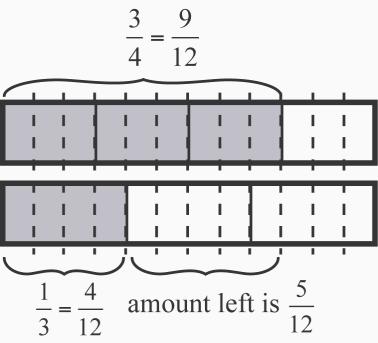
13. See Figure 2.19. 47
7
.
14. Erin is wrong; the tick mark should be labeled 2 2 2 1 . Since the interval from 2 to 3 is partitioned into 8 pieces, each tick mark represents 1 rather than 1
15 . a. 5 of a cup. See Figure 2.20. Representing the two fractions as twelfths allows us to remove the 4 (or 1 ) of a cup from the 9 (or 3 ) of a cup and see that there are
5 parts left, each part being 1 of a cup of water.
appears as 9
appears as 4
Copyright © 2018 Pearson Education, Inc. © 2018 Pearson Education, Inc.
16. a. 3 of a cup. See Figure 2.21. Expressing 3 of a cup of water as 6 of a cup of water allows us to remove half, or 3 of a cup of water, leaving 3 of a cup in the bowl.
17. a.
of a recipe. See Figure 2.22. Expressing
of a cup of flour and
of a cup of flour in terms of sixths of a cup of flour allows us to see that of four parts ( 1 ths of a cup of flour) needed for a full recipe, we have three of these parts, so we can make 3 of a recipe.
and 1 appear respectively as
and 3
18. a. 8 of his order. See Figure 2.23. Expressing the fractions as twelfths of a ton of gravel shows that Ken got eight out of nine parts ordered.
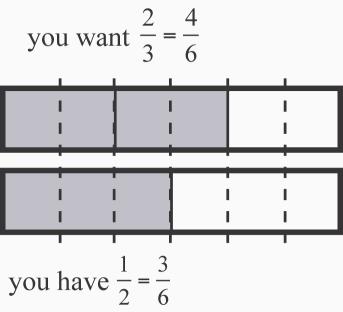
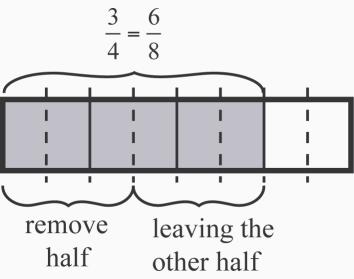

19. a.
of a cup. See Figure 2.24. Representing
of a cup as
of a cup shows that 1 of this amount is taking two parts out of the six, which represent
of a cup.
(Note that since measuring cups rarely come in ninths, Here,a person could argue that 1 of a cup would be a more practical answer.)
20. See Figure 2.25. Since
of a mile corresponds to
of Benny’s total running distance
then thinking of Benny’s distance ran so far as being made up of 4 parts, I split the number line region from 0 to 1 into 4 parts, each corresponding to one of the 4 parts
Benny has run so far. The bold dark arrow shows how far he has run so far. Extending out the next is 1 of a mile to make the full unit mile, we see that these parts we made are is 1 of a mile, while at the same time being 1 of Benny’s total running distance. So
Benny needs to go one more 1 of a mile to finish for a total of 5 parts run, each of size 1 of a mile. So Benny will have run a total of 5 of a mile. This is show in the dotted arrow below in Figure 2.25.
21. See Figure 2.26. since 3 of a mile is equivalent to 6 of mile, I can split how far has been run into 2 equal parts, each being 3

Chapter 2: Fractions and Problem Solving
of a mile while at the same time each part is also 1 of the total running distance. Then she needs to run 5 of those parts so she will have run
mile.
Copyright © 2018 Pearson Education, Inc. © 2018 Pearson Education, Inc.
22. a. It would take 3 1 copies of strip A to make strip B exactly. Since strip B and strip
A are made of equal sized parts, we can use these parts to solve this problem. Each little part is 1 of strip A. You will need 7 of these parts to make strip B. So you have 7 parts, each part is 1 of strip A. So if you make 7 of strip A you will get strip B. Since 2 parts would make an entire copy of A, then you can also say you have 3 1 copies of strip A.
When you consider the parts in relation to strip B, you can see that each part is 1 of strip B. Since strip A only uses 2 of these parts, then you can make strip A with only 2 of strip B.
b. It would take 1 1 copies of strip C to make strip D exactly. Since strip D and strip
C are made of equal sized parts, we can use these parts to solve this problem. Each little part is 1 of strip C. You will need 5 of these parts to make strip D. So
you have 5 parts, each part is 1 of strip C. So if you make 5 of strip C you will get strip D. Since 4 parts would make an entire copy of C, then you can also say you have 1 1 copies of strip C. On the other hand, you could also think of the candies as the way you are comparing the strips. Each candy strip is made up of the same size and type of candy pieces. For strip C you’ve got 24 pieces of candy so each piece of candy represents 1 of strip C. Strip D needs 30 of the candy pieces. If you made 30 of strip C you would get strip D. 5 and 30 are equivalent fractions.
When you consider the parts in relation to strip D, you can see that each part is 1 of strip D. Since strip C only uses 4 of these parts, then you can make strip C with only
of strip D. In terms of candy pieces, you see that each candy piece is
of strip D but you only need 24 to make strip C, so if you made 30 of strip D
you would get strip C. 4 and 24 are equivalent fractions.
c. It would take 1 1 copies of strip E to make strip F exactly. Since strip F and strip E are made of equal sized parts, we can use these parts to solve this problem. Each little part is 1 of strip E. You will need 5 of these parts to make strip F. So you have 5 parts, each part is 1 of strip E. So you if you make
of strip E you will get strip F. Since 4 parts would make an entire copy of E, then you can also say you have 1 1 copies of strip E. On the other hand, you could also think of the candies as the way you are comparing the strips. Each candy strip is made up of the same size and type of candy pieces. For strip E you’ve got 20 pieces of candy so each piece of candy represents 1 of strip E. Strip F needs 25 of the
candy pieces. If you made 25 of strip E you would get strip F. 5 and 25 are equivalent fractions.
When you consider the parts in relation to strip F, you can see that each part is 1 of strip F. Since strip E only uses 4 of these parts, then you can make strip E with only 4 of strip F. In terms of candy pieces, you see that each candy piece is 1 of strip F but you only need 20 to make strip E, so if you made 20 of strip F you
would get strip E. 4 and 20 25 are equivalent fractions.
d. See the answers to part b and c. In both answers our reasons are similar to the reasoning given in part a and we get the same answers. See the first explanation given in the answers to parts b and c. In those explanations, we focused on the fact that Strip C (in part b) and Strip E (in part c) were made of 4 equal size parts, while the other strip (Strip D in part b and strip F in part c) were made of 5 of those same size parts. So in both problems, we determined that 1 1 copies of the shorter strip (Strip C and Strip E) were needed to make the longer strip (Strip D and Strip F), and 4 of the longer strip was needed to make the shorter strip.”
23. a. Rachel has read
as many books as Leah has. Because the parts of the strip
diagrams are of equal size, we can see that Leah has read four portions of books while Rachel has read 3 portions. Since we are comparing to Leah’s amount, then Leah’s amount is the whole or unit amount, which tells us that each portion is 1 of
the amount that Leah has read. Rachel has 3 of these 1 portions so she has read 3 4 4 as many books as Leah has.
b. Leah has read 4 as many books as Rachel has. Since we are comparing to Rachel’s amount, then Rachel’s amount is the whole or unit amount, which tells us that each portion is 1 of the amount that Rachel has read. Leah has 4 of these 3 portions so she has read 3 as many books as Rachel has.
24. a. See Figure 2.27. Starting with Joseph’s strip, dividing it into six equal pieces, then you make Adam’s strip equal in length to five of those pieces.

b. Joseph has read 6 as many books as Adam this year.
25. Becky should pay 1 of the July/August bill, and her two friends should pay 5 of the bill each. See Figure 2.28. Dividing the first month’s cost between the two friends and the second month’s cost among the three girls yields pieces of different sizes. Expressing everything as twelfths of the total July/August usage makes it much easier to express each person’s share.
The cases in parts a. and b. result in the same division of cost. In part a. the bulk of the electricity is shared, so the cost should be shared equally. In part b. the bulk of the electricity is used individually, but the individuals are doing similar things, and thus using roughly equal amounts of electricity, so sharing the cost equally still makes sense.

2.4 Reasoning to Compare Fractions
1. Since the whole or unit is not the same, comparing areas of the two shaded regions is not a valid way to compare the sizes of these fractions. When you compare two fractions like 4 and 8 you are assuming that the unit amount is the same.
2. See the text.
3. See the text.
4. A smaller denominator means the same sized unit it partitioned into a smaller number of pieces. This means each piece must be larger. If numerators are the same, the fraction involving larger pieces is larger overall.
104 is greater. First, notice that the numerator of
104 is greater, so it has more pieces than
109 . Also notice that partitioning a unit into 104 pieces yields larger pieces than partitioning it into 109 pieces. So 36 not only has more pieces than 35 , it also has a
larger number of larger pieces, so 36 is greater.
6.
47 is greater. Both fractions in this problem are very close to one half. In fact they are both less than one half. To make one half when a whole is partitioned into 31 pieces, we would need 15 1 pieces. So 15 is 1 of a piece less than one half of the unit amount, where
Copyright © 2018 Pearson Education, Inc. © 2018 Pearson Education, Inc.
the pieces are 1 of the unit amount in size. To make one half when a unit amount is partitioned into 47 pieces, we would need 23 1 pieces. So 23 is 1 of a piece less than one half of the unit amount, where the pieces are 1 of the unit amount in size. Since these 47 pieces are smaller than the 31 pieces, then half of each piece size remains similar, half of a 1 piece is smaller than half of a 1 piece. So 23 is closer to one half of the unit 47 amount. 31 47 28 is larger because it is closer to 1. It is only 28 away from 1 whereas the other fraction 1 20 away, and since partitioning a unit into 28 pieces yields smaller pieces than partitioning it into 20 pieces, 1 is the smaller amount, so 27 has less to go to reach 1 than 20 so 28 is larger.
8. The order is 1.1, 1, 0.98, 11 , 9 , 1.2. One explanation that might be problematic is explaining why 11 10 8 is smaller than 9 . Since one-tenth is smaller than one-eighth, 11 is 10 8 10 closer to 1 (farther to the left) than 9 . Another explanation that might be problematic is explaining why 9 is smaller than 1.2. Writing 9 as 1 1 and 1.2 as 1 2 11 helps explain this ordering.
9. 23 0.2738 and Figure 2.29.
29 0.2959. The number picked will vary. For example: 7 0.28. See Figure 2.29: A number line 10. 78 0.58209
5821
and 124 0.58216. The number picked will vary. For example:
10000 0.5821. See Figure 2.30.

0.6666 so choose, for example 0.61 and 0.63 which become
14. See Figure 2.31. As shown in this figure, 1 is not halfway between
and 1 . Instead,
and 1 . This fact is most easily illustrated by finding a common denominator between the two fractions:
is halfway between
is halfway between
and
15. Sam is not accounting for the numerators. While a fraction with a larger denominator may have smaller pieces, if it has enough of those smaller pieces (the numerator) then it will represent a larger amount. For example 9 is bigger than 1 even though the halves 10 2 are bigger than the tenths. But having 9 of these tenths makes up for the fact that they are small and is bigger than a single half.
16. Answers will vary. Here are two examples:
a. Which fraction is greater: 1 or 2 ? Since
, 1 is greater even though its
numerator and denominator are both smaller than in 2 .
b. Which fraction is greater: 2 or 5 ? Neither, because they both are equivalent to
2 . So even though the numerator and denominator of fractions are equal.
10 are greater than in 4 , the
17. Malcom’s reasoning is not correct. The problem lies in the fact that although 8 does have more pieces of the unit amount represented than
this complicates the situation. For example, :
Many counterexamples exist, another is
18. a. Yes it is valid: 30
and
the
from the numerator
19.
b. No it is not valid:
c. Canceling happens when the same factor appears in the numerator and denominator when they are written as a product of factors. Cancelling is not valid by simply cancelling the same final digit.
a. The numerators and denominators are both following the Fibonacci sequence. The next numerator (or denominator) is found by adding the last two numerators (or denominators).
8
13
21
34
55
2 3 5 8 13 21 34 55
b. The fractions are increasing in size. When comparing the first and third fractions, the first fraction is one-half less than the third. The third fraction is one-tenth less than the fifth fraction. The fifth fraction is one-sixty-fifth less than the seventh fraction, etc.
c. An analogous pattern occurs in the even numbered fractions except that the fractions are decreasing. The fourth fraction is one-third less than the second. The sixth fraction is one-twenty-fourth less than the fourth, etc.
d. 1, 2, 1.5, 1 6, 1.6, 1 625, 1.6154,1.6190, 1.6176, 1.618. See Figure 2.32.
e. The numbers do appear to be getting closer and closer to a particular number. In fact, the sequence approaches the golden ratio, with a decimal approximation around 1.61803399.
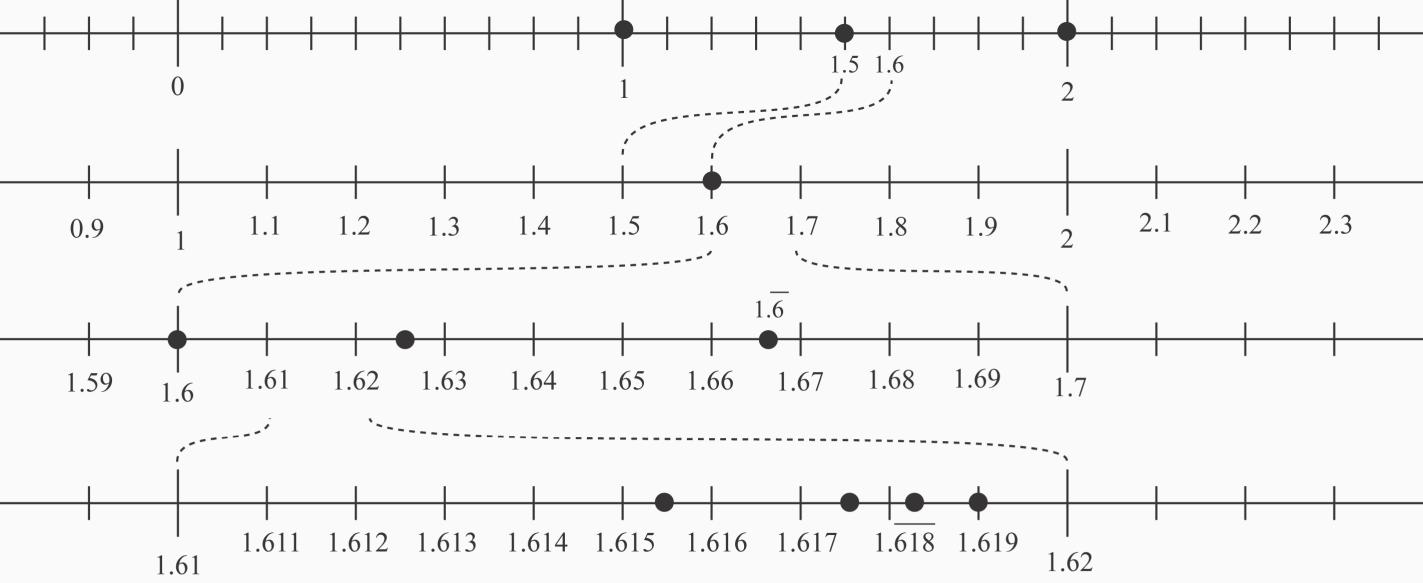
20. a. For example:
b. Frank is correct, but his reasoning is flawed. For example,
has more parts than
, but 3 is larger. Looking only at the number of parts does not account for the sizes of the parts.
c. The claim is that
can be simplified to
. This is only true when
A . Since A is a proper fraction then we know that
is also true. Another way to look at is that the fraction
is
less than 1. Since B is always less than B + 1 in these
situations, and since B > A in these situations,
which means
is closer to 1 than A , which means
2.5 Reasoning About Percent
1. 285 grams. See Figure 2.33. We can find the value by building up the value as follows: 95% 50% 25%
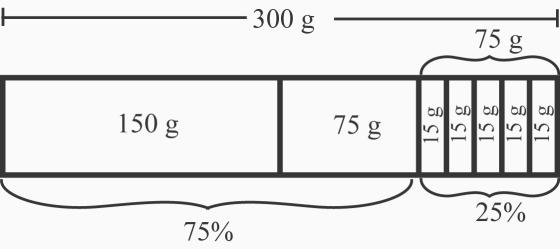
5%
5% 5% 5%; but once we know 5% we can simply deduct that from the total: 100% 5% 95% . So 300 – 15 = 285 grams. Numerically, we have
300 0.95 300 285 grams
We can also solve it with a percent table. See Table 2.1.
Table 2.1: A percent table used to calculate 95% of 300 is ?
2. 60%. See Figure 2.34. The bar representing 100% of the order has five pieces, with each piece representing one-half ton. Each piece also represents 20% of the order, since five of
them make up the total. The three shaded pieces represent the delivered gravel. Since each piece is 20%, the crew has received 20 3 60% of the order.
We can also solve it with a percent table. See Table 2.2.

3. 20 grams. See Figure 2.35. Looking for 80% is like looking for 20% since 80% + 20% = 100%. Also, 20% 5 100% so we can partition the unit amount into five pieces
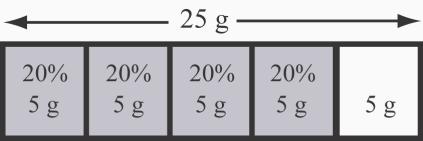
representing 20% each. Numerically, 80 25 (0 8) (25) 20 grams.
We can also solve the problem with a percent table. See Table 2.3.
25 is ?
4. 240,000. See Figure 2.36. The math drawing shows building up 100% by putting together 6 groups of 15% each and then
of 15%. So
6. 70%. See Figure 2.37. Each part represents
-inch of rain. The whole or unit amount represents the average July rainfall. The shaded portion represents this year’s July rainfall. Seven parts out of ten are shaded, which is 70%. Numerically,
7. 66
%. See Figure 2.38. Half a cup of cereal can be seen as two parts out of three, or
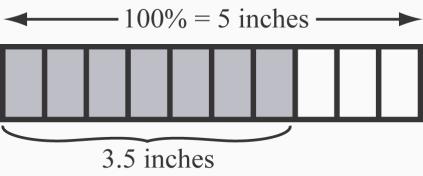


Table 2.5: A percent table used to calculate ?% of 250 = 225
25 is 10% of 250. 225 is 25 less than 250, so it is 10% less than 100%. So 225 is 90% of 250. b.
c. 50% of 1600 is 800. 10% of 1600 is 160. Since 960 = 800 + 160, then 960 is 60% of 1600. See Table 2.6.
Table 2.6: A percent table used to calculate ?% of 1600 = 960
9. a. 3000. See Table 2.7.
Table 2.7: A percent table used to calculate 690 is 23% of ?
b. 7.5%. See Table 2.8.
Table 2.8: A percent table used to calculate ?% of 40 is 3
Table 2.9: A percent table used to calculate 630 is9% of ?
d. 4000. See Table 2.10.
Table 2.10: A percent table used to calculate 12% of ? is 480
10. 75%. See Figure 2.39. The bar represents 100% of your full daily value of folic acid, or 3 cup, as 6 cup. Then 2 cup is three parts out of four, or 75% of your full daily value of folic
Figure 2.39: Part of a serving of cereal
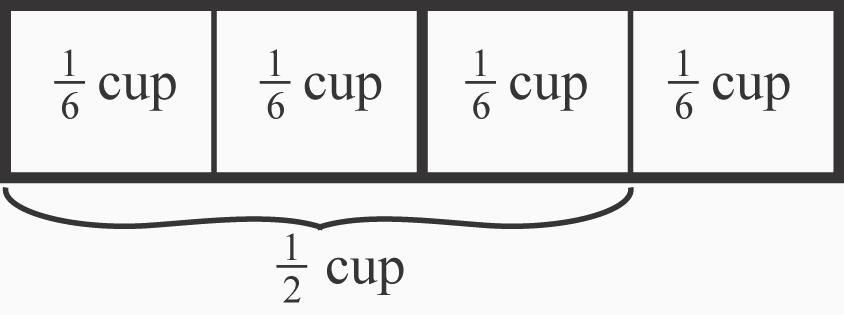
11. 4,370. This problem is very similar to Problem 1. See Table 2.11. 5% of 100% is 1 , so
5% of 4,600 is 4,600 ÷ 20 = 230. So Biggo Corporation hopes all but 230 employees, or
– 230 = 4,370 employees will participate. Numerically,
.
Table 2.11: A percent table used to calculate 95% of 4600 is ?
12. 85%. See Table 2.12.
Table 2.12: A percent table used to calculate ?% of 4 is 3.4
Split the 3.4 acres and consider 3 acres + 0.4 acres. 3 acres is 75% of 4 acres (think 3 ), and 0.4 acres is 10% of 4 acres. So with 3 4 acres, the company has 75% + 10%. Or solve the equation: 4 P 3.4.
13. $4.8 million. See Table 2.13.
Table 2.13: A percent table used to calculate 75% of ? is 3.6 million
Recognizing that 75% and 100% are both multiples of 25%, I first divided 75% by 3 and 3,600,00 by 3 to show that 1,200,000 matched with 25%. Then to get to 100%, I multiplied 25% by 4 and also 1,200,000 by 4 . Or solve the equation: 0.75 N 3.6.
14. 50,400. See Table 2.14
Table 2.14: A percent table used to calculate 60% of 84,000 is ?
The problem asks “what is 60% of 84,000?” 50% is 42,000, and 10% is 8,400. So 60% is 42,000 + 8,400 = 50,400. Or solve the equation: 0.60 (84,000) N .
